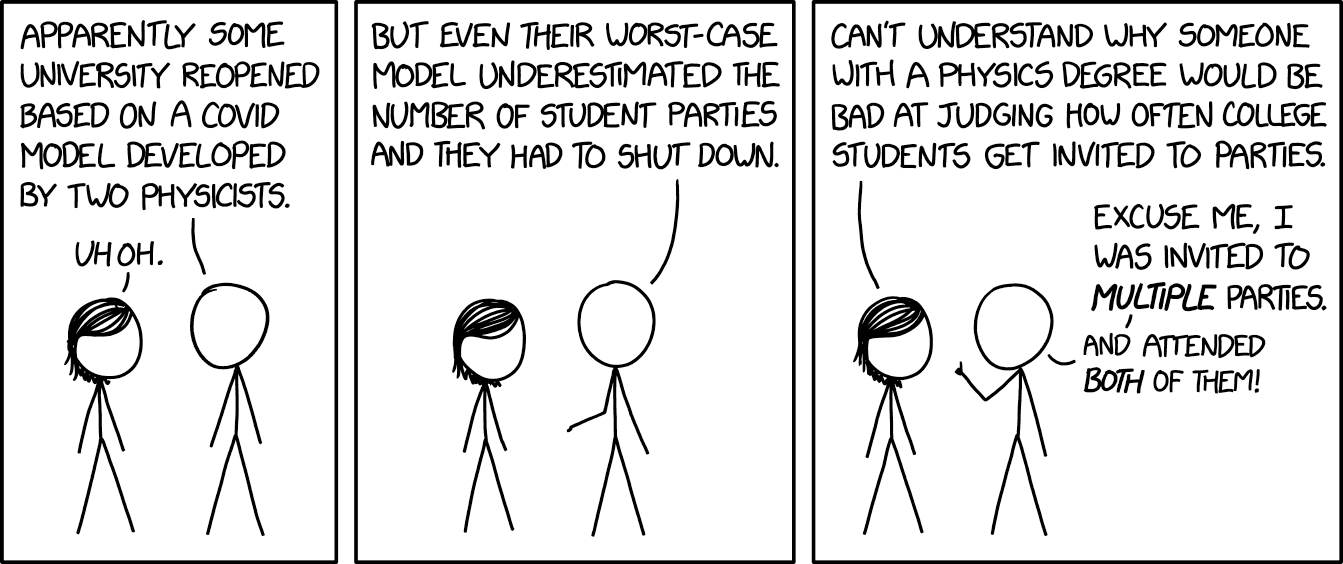Understanding Systems with Models
Lecture 03
August 28, 2023
Review and Questions
What Is A System?
A system is an interconnected set of components which “achieve” some function.
System State
System State: quantities or variables which evolve over time based on external inputs and system dynamics.
The state gives you a “snapshot” of the system at a given point in time.
Stocks and Flows
- A stock is the amount of a system property: concentrations of a pollutant, numbers of currency units, etc.
- A flow is the way in which a stock changes: decay, diffusion, production, consumption, etc.
Why Are Systems Interesting?
System interconnections can lead to very different dynamics and outcomes than if the component processes were studied in isolation.
This can have implications for design and management, and means we need to model the entire system to understand how different processes impact the whole.
Questions?

Text: VSRIKRISH to 22333
Modeling Systems
Systems Analysis Needs
To study a system, we need:
- A definition of the system
- A model of the system
What Is A Model?
Mathematical Models

Mathematical Models of Systems
Conceptual Model of a System
Environmental Systems
- Municipal sewage into lakes, rivers, etc.
- Power plant emissions into air
- Solid waste placed on landfill
- CO2 into atmosphere
Deterministic vs. Stochastic Models
Deterministic Models
Stochastic Models
Descriptive vs. Prescriptive Models
Descriptive Models
- Used primarily for describing or simulating dynamics.
- Intended for simulations and exploratory and/or Monte Carlo analysis.
Prescriptive Models
- Specify (prescribe) an action, decision, or policy.
- Intended for optimization or decision analysis.
Analytic vs. Numerical Solutions
Mathematical models can be solved:
- Analytically: can find the exact solution in closed form;
- Numerically: can only find solutions (exact or approximate) using computational tools.
In general, simple models might be able to be solved analytically, but anything more complex requires numerical methods.
Caution: “All Models Are Wrong…”
“All Models Are Wrong, But Some Are Useful”
…all models are approximations. Essentially, all models are wrong, but some are useful. However, the approximate nature of the model must always be borne in mind….
— Box & Draper, Empirical Model Building and Response Surfaces, 1987
What Are Models Good For?
Models can corroborate a hypothesis by offering evidence to strengthen what may be already partly established through other means…
Thus, the primary value of models is heuristic: Models are representations, useful for guiding further study but not susceptible to proof.
— Oreskes et al, “Verification, Validation, and Confirmation of Numerical Models in the Earth Sciences”, 1994
Models And Assumptions

XKCD Comic 2355
Source: XKCD 2355
A Leading Question
Someone has developed a model of a complex process (say…number of cases of a particular infectious disease).
They claim that their model has precisely predicted case counts for a few months, and use this to argue that we should use it to predict future case counts.
Should we trust their claim? What might this imply about the model? Could it be useful?
Key Takeaways
Key Takeaways
- Mathematical models allow us to understand how external inputs combine with internal system dynamics to produce outputs.
- Models can be prescriptive or descriptive depending on goal of analysis.
- For most interesting problems, cannot solve analytically and need to use numerical methods.
Key Takeaways
- Simulation models: Generate data by evaluating model to represent system dynamics.
- Optimization model: Find parameters which maximize/minimize some criterion.
Key Takeaways
- All models are at best approximations: be conscious of what assumptions you’ve made and how they might change the modeled outcomes (you will be asked to do this on homeworks).
Upcoming Schedule
Next Classes
Wednesday and Friday: Examples of Formulating/Analyzing Models.
